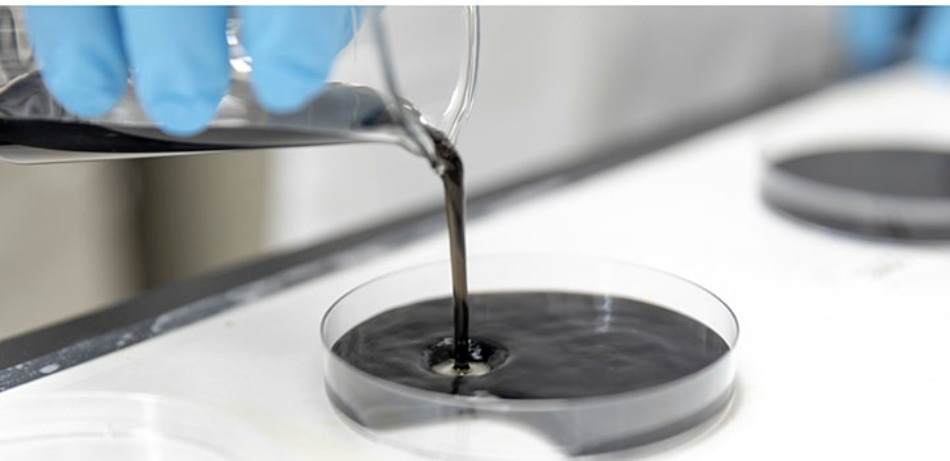Nov 27 2018
A new study by researchers at KAUST proposes that a simple device with the ability to capture its own weight in water from fresh air and subsequently release that water upon being warmed by sunlight could be a new, secure source of drinking water in remote arid regions.
 Renyuan Li pours the hydrogel into a petri dish and allows it to form to the mold. (Image credit: © 2018 KAUST)
Renyuan Li pours the hydrogel into a petri dish and allows it to form to the mold. (Image credit: © 2018 KAUST)
On the global scale, the air around the Earth contains nearly 13 trillion tons of water, an enormous renewable reservoir of clean drinking water. Tests of various materials and devices created to extract this water source have demonstrated that each one is too costly, inefficient, or complex to be put to practical use. A prototype device created by Peng Wang from the Water Desalination and Reuse Center and his colleagues could eventually change that.
A KAUST team has developed an inexpensive hydrogel-based material that efficiently captures moisture from the air and then releases it on demand. (Video credit: © 2018 KAUST)
The main ingredient of the device is calcium chloride, a stable, low-cost, non-toxic salt. This molten salt has a very high affinity for water and can absorb large amounts of vapor from the ambient air to ultimately form a pool of liquid, stated Renyuan Li, a PhD student in Wang’s team.
The deliquescent salt can dissolve itself by absorbing moisture from air.
Renyuan Li, PhD Student, KAUST.
Although calcium chloride exhibits excellent water-harvesting capability, the fact that it transforms from a solid to a salty liquid upon absorbing water has been a significant challenge in using it as a water capture device, stated Li.
Systems that use liquid sorbents are very complicated.
Renyuan Li, PhD Student, KAUST.
In order to solve the issue, the scientists combined the salt with a polymer known as a hydrogel, which has the potential to hold a large volume of water while remaining a solid. They also added carbon nanotubes in small amounts, 0.42% by weight, to make sure that the captured water vapor is released. Carbon nanotubes are highly efficient at absorbing sunlight and transforming the captured energy into heat.
The researchers included 35 g of this material into a simple prototype device. When the device was left outside overnight, it captured 37 g of water on a night when the relative humidity was about 60%. The next day, following 2.5 hours of irradiation by natural sunlight, most of the absorbed water was released and collected inside the device.
The hydrogel’s most notable aspects are its high performance and low cost.
Renyuan Li, PhD Student, KAUST.
In case the prototype can be scaled up to synthesize 3 l of water a day—the minimum water requirement for an adult—the material cost of the adsorbent hydrogel can be reduced to half a cent per day.
According to Wang, the next stage will be to tweak the absorbent hydrogel to continuously release harvested water as opposed to releasing in batches.